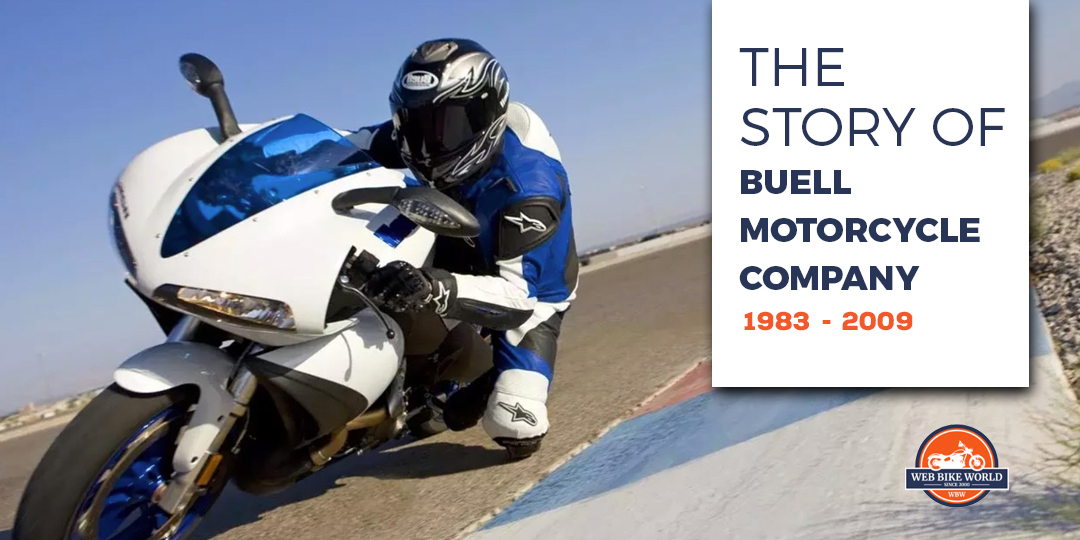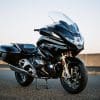Unique Vision Squandered by Harley-Davidson
Buell Motorcycle Company is best known for its connection with Harley-Davidson. It’s one of the many things you can point to in Harley’s long history that The Motor Company managed to mess up, but that’s really only part of the story of Buell.
The company’s story spans nearly four decades. During that time, Buell became a household name and worked its way into the very heart of the motorcycle industry. It’s a company that made enough of an impact on the world to deserve a good long look, and that’s what I plan to do.
From the Buell Blast thumper to the 1125CR cafe racer, the company made some very interesting and impressive bikes, and it made its mark not only on the consumer motorcycle scene but the motorcycle racing world, too. Let’s take a look at the Buell Motorcycle Company and what made it special.
What Was the Buell Motorcycle Company?
Buell Motorcycle Company was an American motorcycle manufacturer that started in 1983 by an ex-Harley-Davidson motorcycle engineer named Erik Buell. When it started, it was called Pittsburgh Performance Products then it changed its name to Buell Motorcycle Company. Erik started the company and built the first Buell motorcycle simply to compete in AMA Formula 1.
Rockville Harley-Davidson in Rockville, MD, was the first dealership to sell Buell motorcycles to the public in 1987. From there, the company kept chugging along, earning credit from people within the motorcycle industry, specifically motorcycle racing.
Here Comes Harley-Davidson
In 1993, Harley-Davidson bought 49 percent of the company and continued to expand the brand within its own business. In 1994, Buell created the Buell Riders Adventure Group (BRAG), which held events and group gatherings in different areas of the country. This helped build the brand even more.
In 1998, Harley bought another 49 percent of the company, leaving Erik with only two percent of the company that he started. The sales and racing continued. Buell motorcycles saw some success at the racetrack, even winning the AMA Daytona Sportbike Championship in 2009.
Buell’s End
In that same year, amid an economic downturn, Harley-Davidson decided to shut down the Buell Motorcycle Company. It didn’t want to sell the bikes at Harley dealerships and Buell lacked a dealership network of its own.
Many consider this a massive mistake on Harley’s part, and the company lost a lot of money over the course of the company’s life due to the brand being completely mismanaged.
In the end, Buell made over 135,000 motorcycles over the course of the company’s life. It also made an impact that’s still felt today.
Who Is Erik Buell?
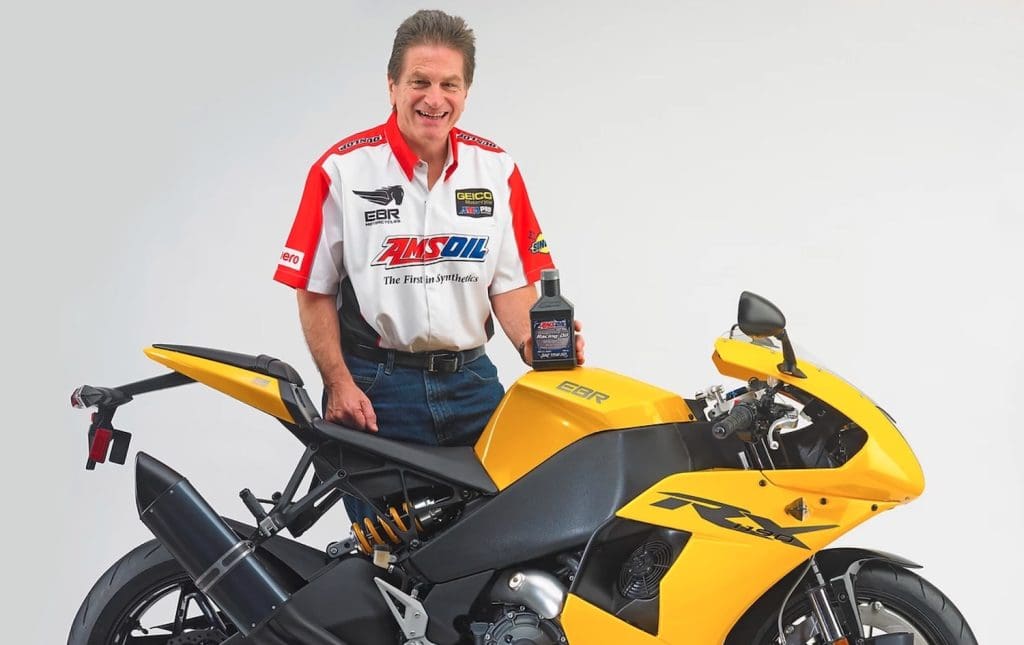
Erik Buell, to put it simply, is a pioneer of motorcycle technology. He grew up in Pennsylvania and began riding motorcycles in his teens. He attended the University of Pittsburgh. From there he took a job with Harley-Davidson after graduating and spent a lot of time racing motorcycles as a privateer.
He was successful and wanted to devote more time to his racing career, so he left Harley-Davidson in the early 1980s to start his own company and build a bike to compete with the Yamaha TZ bikes that were used at the time.
He started building his own racing motorcycles to compete in AMA racing. After gaining some ground and reconnecting with some Harley folks, he began his new relationship with the company. In the end, Buell was responsible for the engineering portion of the business and Harley was responsible for the rest.
After Buell got shut down in 2009, Erik decided to keep going. This resulted in him creating the company Erik Buell Racing, which still exists today in some capacity.
Known as EBR, the company builds the following racing motorcycles 1190RS, the 1190RX, and the 1190SX. In 2013, Hero MotoCorp bought a minority stake in the company. In 2015 Liquid Asset Partners acquired the company. Production stopped. In 2016, it started producing the bikes and parts again. In 2017, it was announced that the company would be liquidated. In 2018, the company posted to its website that the motorcycles are back in limited production.
In 2019, it came out that Erik was involved in a new venture with some French financiers. The electric motorcycle company is called Fuell. Buell is designing and engineering the bikes for that company. There will be an electric bicycle called the Flluid and an electric motorcycle called the Fllow.
Erik has been named to the AMA Hall of Fame and identified as Motorcyclist of the year in 2011 by Motorcyclist Magazine, among other honors.
Buell’s Models
Over the course of the company’s life, it saw many models come into existence. Here’s a quick look at all of the bikes that carried the Buell name with them.
RW 750 Road Warrior
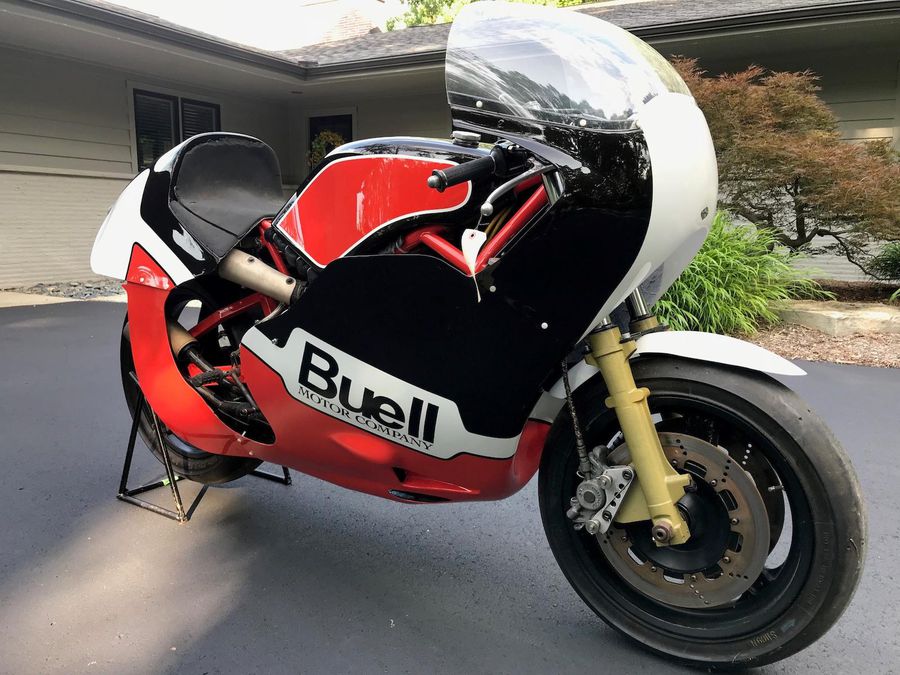
The RW 750 Road Warrior was the first bike that Erik Buell made for racing in the AMA. It was developed by using a lot of the Barton Formula One racing motorcycle, which Buell owned the rights to.
The bike featured a liquid-cooled two-stroke square four engine, and was purpose-built for AMA Formula 1 racing, but by the time it was finished, the AMA had discontinued that class of racing.
RR 1000 Battletwin and RR 1200 Battletwin
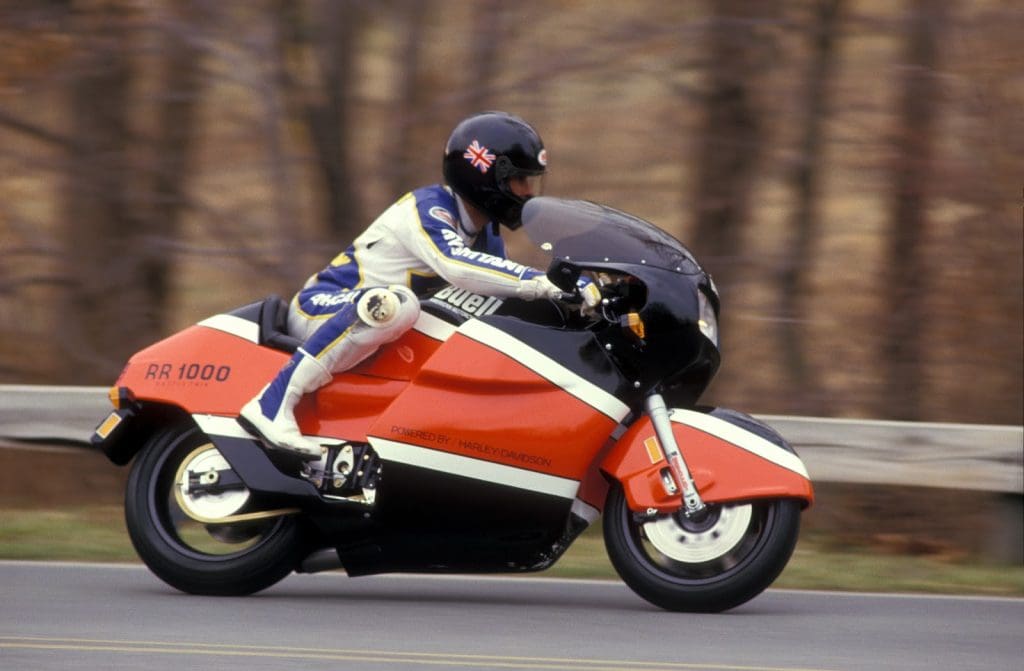
The RR 1000 Battletwin was a street-focused sportbike that utilized the Harley XR1000 engine. It was built on a modified RW 750 chassis. One of the unique features of this motorcycle was Buell’s use of the Isoplanar engine mounting system.
This system utilized the XR1000 engine as a stressed member of the frame of the bike. This also allowed Buell to place the suspension in unique ways. The company made a few different versions of the bike over the course of its production. Buell also made a 1200 Battletwin, which was essentially the same but with a larger engine.
RS 1200 Westwind and RSS 1200 Westwind
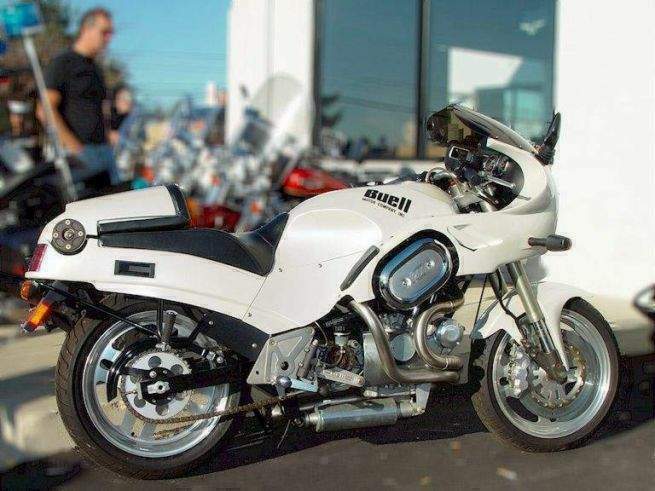
The RS 1200 Westwind and the RSS Westwind were a couple of unique street bikes built by Buell that took the Harley Sportster engine and repackaged it into a unique and interesting machine. The bikes helped pioneer Buell’s to come.
One unique feature was the rear seat hump or cowl that could be flipped up to act as a backrest when needed. This and the overall sporty look of the bike helped establish Buell in the 1980s.
S2 and S2T Thunderbolt
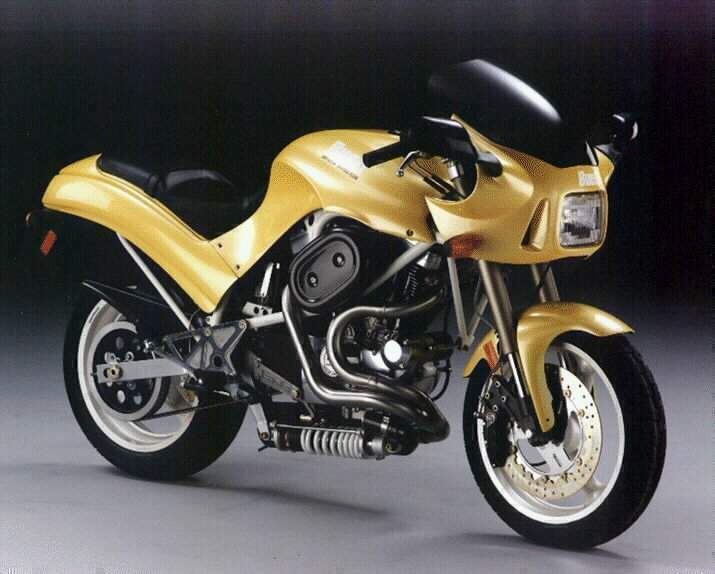
The S2 and S2T Thunderbolt were based on the Road Warrior and again used a Harley Sportster engine as a stressed member of the frame.
The bikes were designed as sport-touring machines. They featured a passenger seat and you could even get the bike with hard saddlebags and other touring equipment in the S3T version, helping you get the most out of the machine when it comes to those longer tours.
S1 Lightning
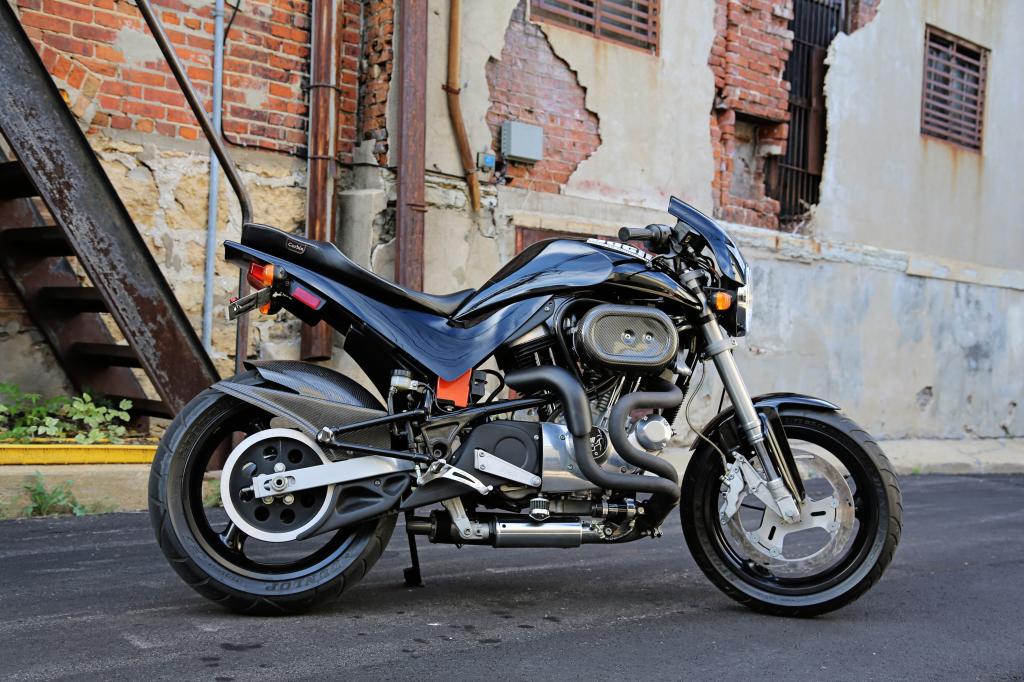
Made for only three years, the S1 Lightning was more of a bonafide sportbike than the S2 Thunderbolt. It had a naked design to it, and it still featured a Harley Sportster engine. Again, the engine was used as a stressed member, and the bike seated two people.
The final year for the S1 Lightning was the best. Buell built the S1W White Lightning It featured a larger gas tank and unique Thunderstorm cylinder heads that boosted horsepower a little bit.
X1 Lightning
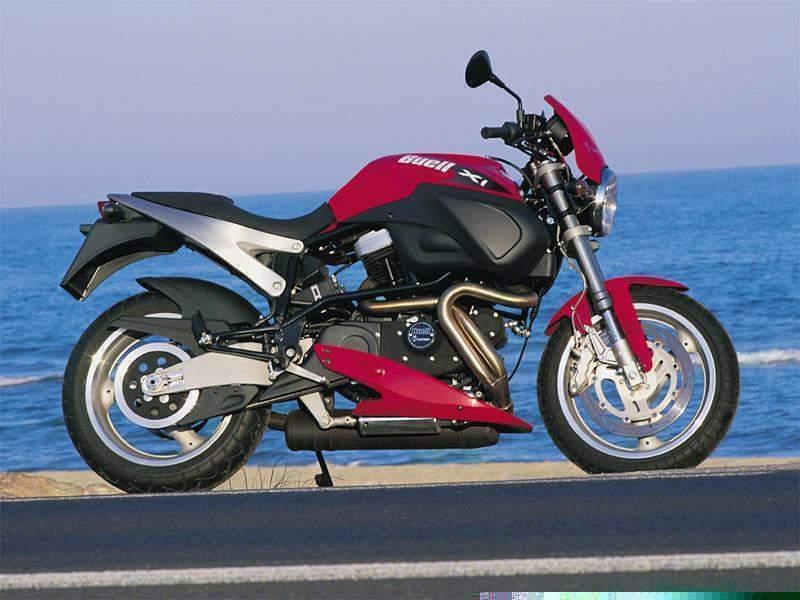
The X1 Lightning was the bike that succeeded the S1 Lightning. It took what the S1 had done well and improved the formula.
The Thunderstorm heads became standard on all of the X1 Lightning models, fuel-injection, and a larger fuel tank, too, became standard. The motorcycle still used the Harley Sportster air-cooled engine.
S3 and S3T Thunderbolt
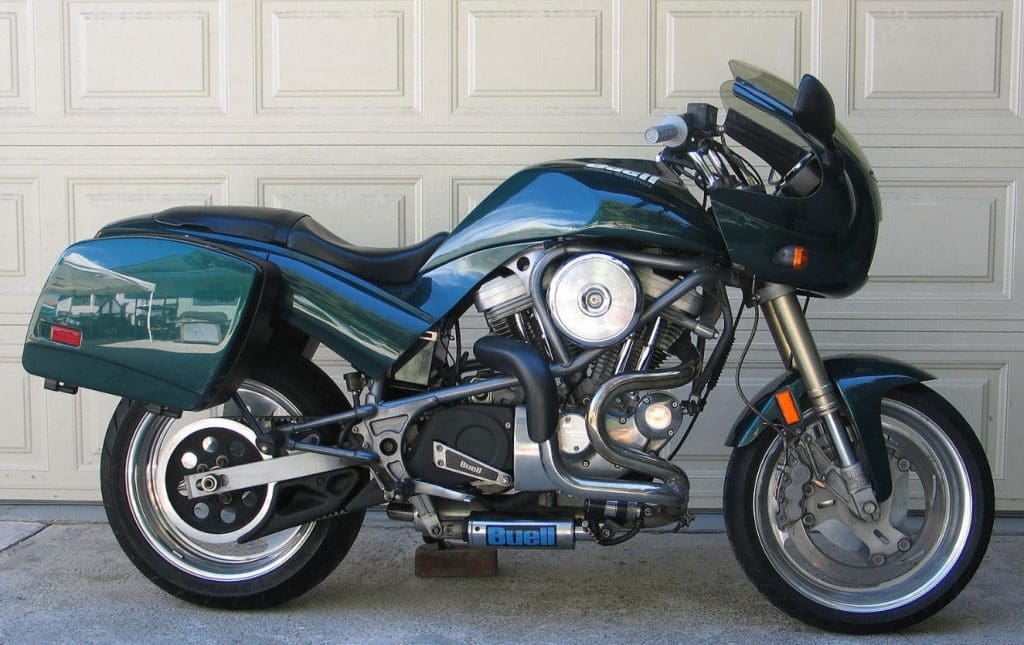
The S3 and S3T Thunderbolt were sport touring motorcycles that came after the S2—big surprise, right? The motorcycle was improved over the S2. It features high-end components from WP Suspension, Performance Machine brakes, and Keihin. The difference between the S3 and S3T was that the T (touring) offered some more long-distance features, like hard saddlebags and a lower fairing.
The original S3 and S3T Thunderbolts featured a tubular steel swingarm, but in 199 the bike was upgraded to have a cast aluminum swingarm, Showa suspension, fuel injection, and Nissin brakes.
M2 Cyclone
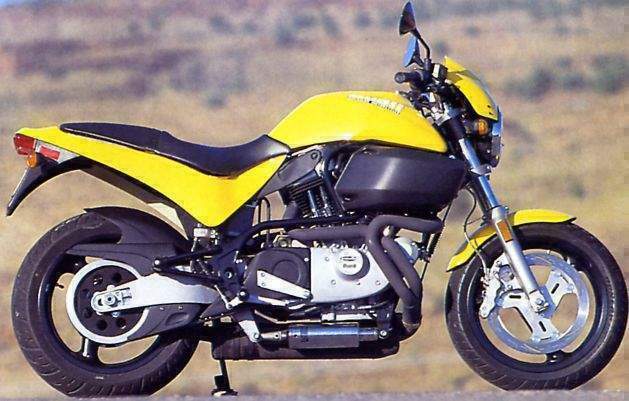
The M2 Cyclone was the bike that fit right between the Thunderbolt models and the Lightning models. Whereas the Thunderbolt was a bit on the heavier side and comfier, the Lightning was more of a hardcore sportbike. The M2 Cyclone split the difference.
The bike featured a steel frame, the Harley Sportster engine, and riding characteristics perfectly between the other two Buell rides. That meant it was sporty but not a pain to sit on. The model came out in 1997 but received updates in 1998 to alleviate some minor issues. This made it a heck of a good motorcycle.
Blast
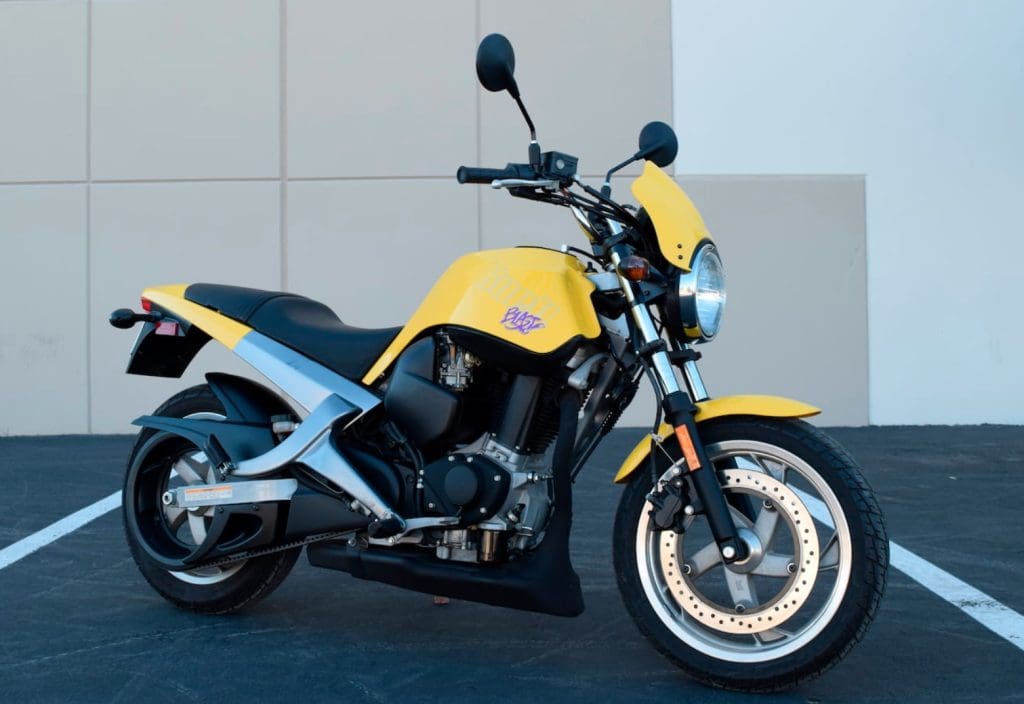
Ah, the Buell Blast. This bike was the company’s entry-level bike, and it served Harley well in its rider education courses. A lot of these motorcycles are floating around still today.
The bike featured a simple single-cylinder engine with moderate power and a curb weight of around 360 pounds. It was perfect for rider education courses and that’s where most of these bikes ended up, though Buell did sell a fair number of them.
Firebolt XB9R and Firebolt XB12R
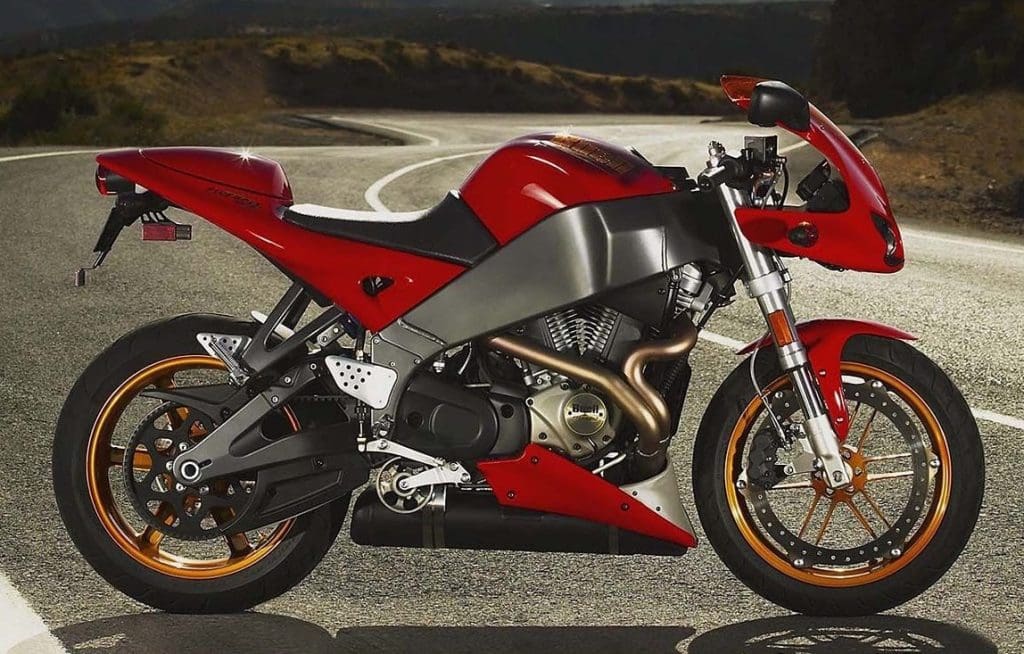


The first of the XB motorcycles was the Firebolt. There was an XB9R and an XB12R both were similar machines with the latter being the higher-displacement version of the motorcycle. The bikes were excellent sportbikes designed for the street with the DNA of a track bike.
The XB9R featured a 948cc V-twin engine shoehorned into a small frame and short wheelbase. The XB12R came a year later and was essentially the same bike but it featured a larger displacement 1,203 engine. It was one of the best street sportbikes the company produced.
XB9S Lightning, XB12S Lightning, and Variations
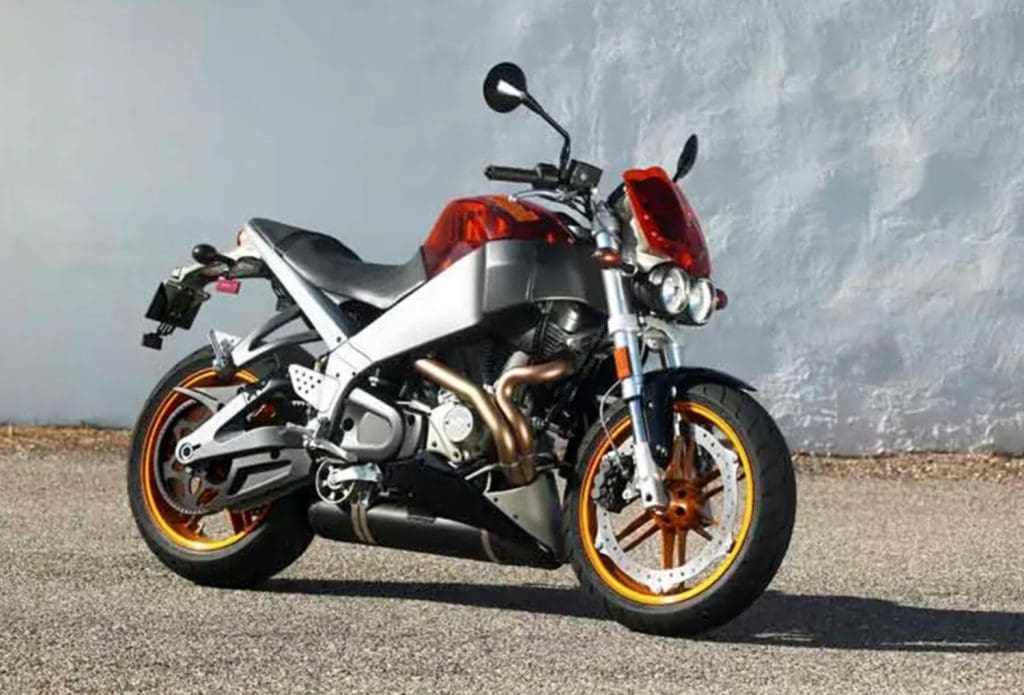


Buell made several variations of the XB Lightning bikes. It started with the XB9S Lightning and then released the XB12S Lightning. From there the variations got better and better and more advanced.
The XB Lightning was the company’s streetfighter and competed with other streetfighters in the early 2000s. It was a bike that a lot of people liked, though it was a bit odd. The older-tech Harley engines in the short, naked sportbike chassis worked well, but it wasn’t for everyone.
XB12S Ulysses and XB12XT Ulysses
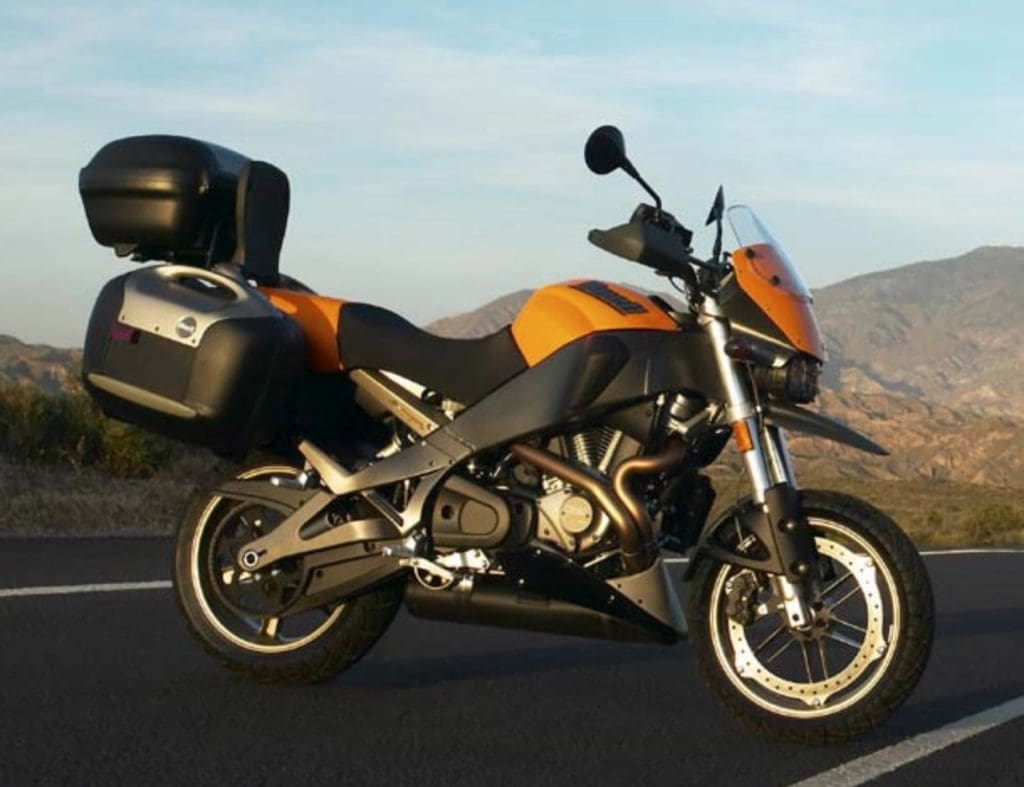


The Ulysses was truly ahead of its time. It’s only now, more than 10 years after Harley killed Buell that the company has realized it needs an adventure touring motorcycle and that’s exactly what the Ulysses was. The motorcycle was an adventure touring machine with a Harley V-twin and a ton of torque.
It was well-liked by many riders and debuted to mixed reviews. If Harley can do as well as the Ulysses with its new Pan America adventure motorcycle that has yet to come out, I’ll be impressed.
1125R and 1125CR
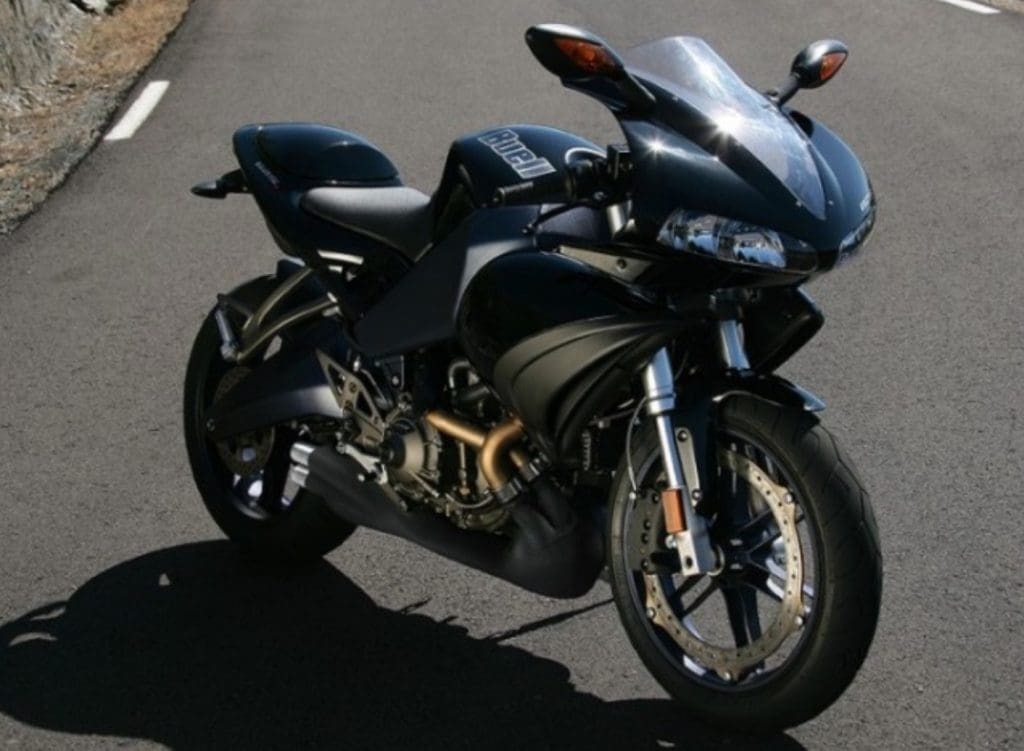


The last sportbike for the street that Buell made was the 1125R and the 1125CR. The 1125R departed from using Harley engines, and Buell used a Helicon 72-degree V-twin engine made by BRP-Powertrain (Rotax) of Austria. It was a well-liked machine by many riders but a bit of an oddball overall.
After coming out with the 1125R, the company released the 1125CR, which was a futuristic cafe racer version of the same motorcycle. Yet again, Buell was ahead of its time with this bike. It’s one of those motorcycles that, if it were produced today, I could see it being a success.
XBRR
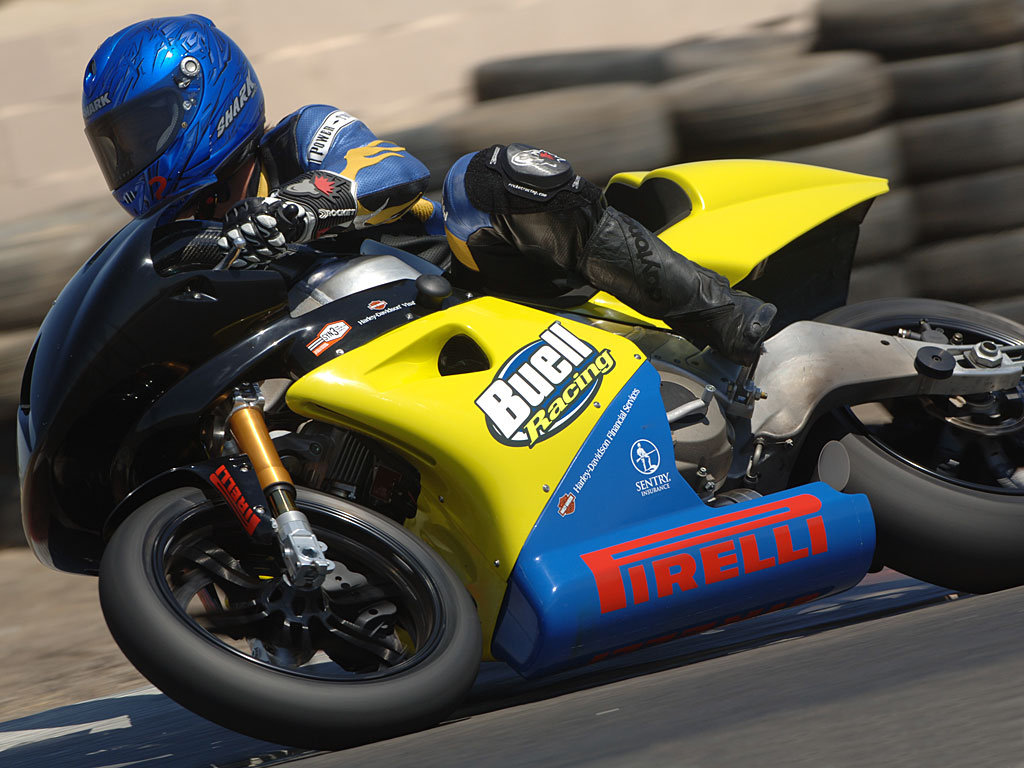


The Buell XBRR was a racing motorcycle with an engine that Buell engineered and produced. Buell only did a limited series of 50 of these motorcycles.
It was a unique frame and featured Öhlins suspension, eight-piston Nissan brakes, and magnesium wheels. It was an advanced machine for its time, and it was unlike most other bikes out there. Racers did manage to win races with the XBRR, including a victory in the American Sportbike Racing Association (ASRA) Pro Superbike at the Daytona International Speedway.
1125RR
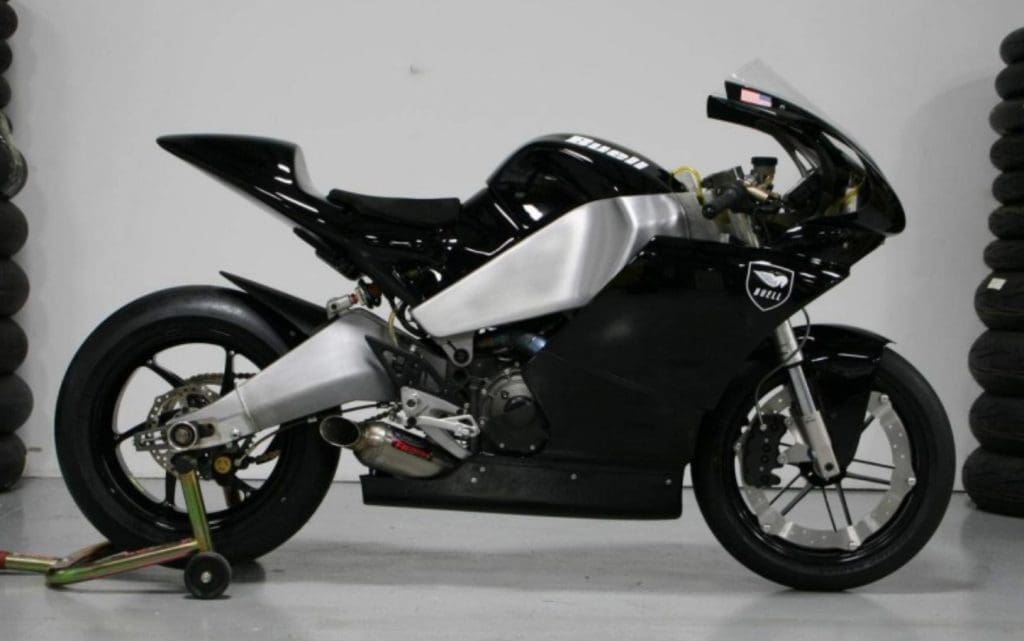


The 125RR was a racing model only that was sold as a superbike. The bike featured a lot of what the 1125R offered, but it did receive some updates, including titanium exhaust, magnesium wheels, full fairings, and a chain drive.
This is the bike that Buell won its first AMA Pro racing championship with. It’s also the bike that won the NHRA Pro Stock Motorcycle world championship. I’ll talk a little bit more about racing below.
Buell Racing
The heart of Buell was always racing. The potential for the brand was massive, and it was horribly squandered, but the racing of Buell motorcycles continues to this day.
When the company was still operating, it produced several racing-only models starting with the first RW 750 that never saw competition. Other notable builds for the company include the XBRR, which came out in 2006.
The XBRR was the privateer racers’ wet dream. It was purpose-built for racing and Buell made a limited number of the machines.
The pinnacle of racing for Buell came right at the end of the company’s life. It was when Danny Eslick rode the Buell 1125R to his and the company’s first AMA Pro racing championship. That same year, Hector Arana won the NHRA Pro Stock Motorcycle world championship for Buell.
Erik Buell Racing is the continuation of the company’s racing efforts. The company has had many podium finishers and has won Superbike World Championship points.
What Erik Buell set out to do, in a sense, he has done. In fact, he made a bigger impact on the motorcycling world—and continues to do so—than he probably ever set out to. His impact is so much more than the company he helped run in conjunction with Harley-Davidson, and hopefully, he has more to give with the new electric motorcycle venture.


